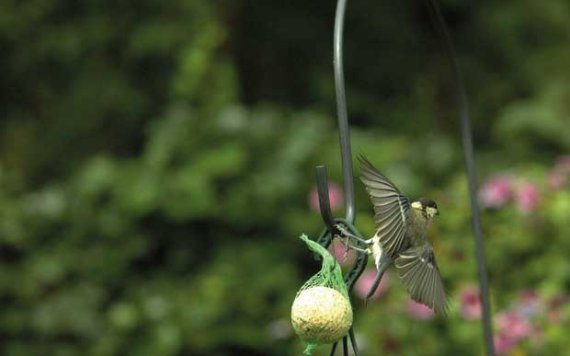Striking. First off, the collisions are certainly striking. Insects turn out not to be quite the precision flyers we took them for. There are frequent accidents. Exactly how frequent is hard to tell, says Lentink. ‘About three percent of the films show a collision. But you cannot conclude much from that. People send in the material they consider remarkable, and a collision is certainly that. More research is needed before we can draw any statistical conclusions about it.’ Collisions are much rarer among birds. That seems logical, as a collision between birds has much more impact than one between insects. ‘Insects don’t easily break anything. But don’t go thinking this means that insects are not good at flying.’ Interesting. ‘The wing beat rate of the bumble bees’, says Scheifes. ‘They seem surprisingly similar across the different species of bumble bee. Whereas the variation within one species is quite large.’ A bumble bee beats its wings about 150 times per second. You can only see that sort of thing in extremely slow motion film. Something else that Scheifes finds interesting is the linking of the wings in insects with two pairs of wings. ‘We’ve got film of that process in a flying ant. As it beats its wings to warm them up, it links them together so that they become one pair of wings. And this already starts during the warming up. You can only see that with a high-speed camera like this.’ Spectacular. Flies are the stunt pilots of the insect world. ‘We have one film of a fly doing a somersault with a sideways twist while making a perfect landing’, says Lentink with great enthusiasm. And don’t imagine this was just a fluke. ‘Not at all. It is perfectly coordinated. Really incredible, the manoeuvrability of the fly. We also have shots of a fly doing a somersault as an escape manoeuvre. I have sent that one to a colleague who is doing research on that. There is even a recording of two flies mating on the wing. That’s normal for dragonflies, but I have never seen flies do it before.’ Intriguing. A goose flying upside-down. Once photographed, but never yet filmed at high speed. Lentink: ‘I find it very exciting that a bird’s wing works upside-down as well. From a theoretical point of view, it is spectacular even, given how the feathers are layered to form an airtight wing. But I am also very interested in the behaviour that underlies such a move. What makes a goose do that?’ Popular. The film that has been watched the most of Youtube is the recording of a white dove taking off (see page 16). Almost 100,000 hits. Nothing special in terms of flight mechanics, says Lentink. ‘But the way the film was made is fantastic. In a hangar and with a black background. You can see the wing movements beautifully. If I want to explain to someone why I like flight so much, I just have to show them that film.’ And so this film fulfils exactly Lentink’s aim with this whole project: to show how extraordinary flight is.
Slow motion
Flight artists is the name of the project with which David Lentink (Experimental Zoology) and his team won the Annual Academic Prize at the end of 2010. The team trained several hundred volunteers in using high-speed cameras to film flight in the natural world. The cameras are Casios which can shoot a maximum of 600 frames per second, and a supercamera called the Phantom, which can shoot up to 7,500 frames per second in HD format. This creates extremely slow-motion images. The films can be seen on Youtube (and at www.vliegkunstenaars.nl) Participants have the use of the cameras for another two years.

